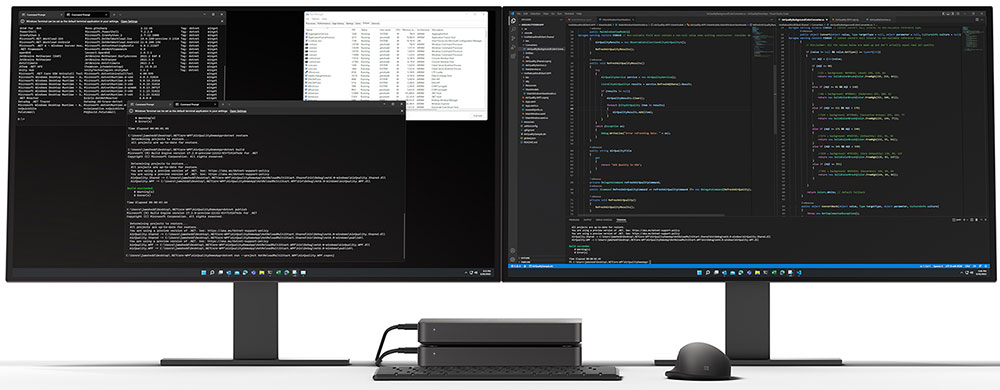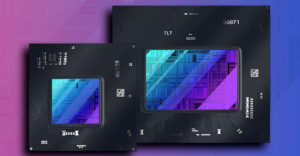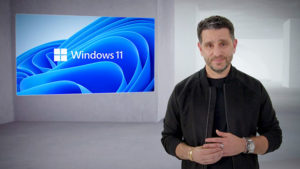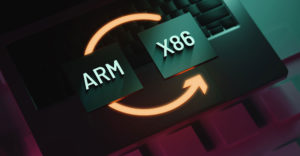Microsoft Build is Microsoft’s most interesting event because it focuses on the people that build stuff, mostly code, but often, as is the case this year, hardware.
Last week, Microsoft held its latest Build event and I’m pretty sure it caused most of the PC OEMs to freak out. This is because Microsoft announced a new focused workstation for developers called Project Volterra. It has four processors and is based on ARM, not x86, and it’s coupled with a major effort to provide ARM native code that allows that platform, with Qualcomm’s help, to reach its full potential once the code is available toward the end of 2022.
But ARM is only one of four processors. We still have the GPU, but Microsoft added a NPU and an ACU (Azure compute unit), and that last one isn’t even in the PC. Let’s talk about how Microsoft is radically rethinking the PC in a cloud world, and how disruptive this needed change is likely to be.
Then we’ll close with my product of the week, which has to be Project Volterra because it reminds me of the old PCjr from IBM but done right. (IBM crippled the IBM PCjr because they were rightly afraid it would cannibalize their IBM PC sales, creating what is now a textbook product mistake.)
Inside the 4-Processor PC
Today, PCs have two processors, a CPU that handles numerically related information, and a GPU that is more focused on unstructured data and visual information. Together they define how a PC performs, with the current trend shifting loads from the CPU to the GPU because they are increasingly less structured and more visually focused, particularly when it comes to how PCs present their information.
But with the rise of artificial intelligence — and the fact that AI operates very differently than apps designed for CPUs or GPUs, by forming decision chains based on neural network capabilities premised on how we believe our brains work — these loads work inefficiently on CPUs, and though more efficiently on GPUs, beg for a very different hardware architecture designed specifically for those workloads.
Enter the NPU or neural processing unit. On paper it can outperform both the CPU and GPU with AI loads doing more with far less power and opening the door to developers who want to create applications that can use a focused and more efficient AI processing platform. It implies a much harder focus on AI capabilities going forward, and Microsoft has said that, in the future, all PCs will have NPUs.
But what about the APU? Well, this is an acronym I came up with. APU stands for Azure processing unit. This is that second shoe we’ve been waiting to drop ever since Satya took over Microsoft. It refers to a persistent connection to Azure in the cloud for additional processing power. It is really the first hardware implementation at the endpoint that addresses the hybrid world we live in today.
By hybrid I don’t mean working from home and in the office, though that does apply to the world we are in today. Nor does this apply to hybrid cloud as we currently talk about it which has to do with server loads. This is a new hybrid concept, one where the loads are shifted between the cloud and the desktop as needed.
Like PCjr – but in a Good Way
Project Volterra is a new class of workstation with all four processors based on ARM and focused on developers who develop for ARM-based PCs. As I mentioned earlier, this reminds me of the PCjr (pronounced “PC junior”) from IBM back in the 1980s but done right.
The PCjr was a revolutionary modular design that was incredibly well priced for the time and provided an easy upgrade path that would have anticipated the PC-as-a-service concept that came decades later.
But someone in IBM planning raised the concern that the PCjr, which was targeted at consumers, was too good because it made the vastly more expensive IBM PC look old and overpriced. So, they crippled the PCjr and effectively killed it, leading them to learn the lesson that you never cripple a product because it is too good. If customers prefer it, you pivot to that preference to assure that customer needs are prioritized over revenue.
Which brings us back to Project Volterra. It looks to be a high-performance desktop workstation that could be built far less expensively than traditional workstations. In addition, it is stackable to add performance much like the PCjr was modular. But most importantly, it is not crippled. While it is initially focused on building ARM native apps, it anticipates a future where those apps are prevalent and can perform in line with their older x86 versions.
This takes the one big problem for ARM PCs — that they must run under emulation and thus operate inefficiently, causing them to underperform against x86 PCs — and enables them to compete with x86 on a more even playing field. None of these are on the market yet and the wave they are building for is still several years out. As we get closer to 2025, I expect ARM-based PCs and workstations with all these advantages will be able to compete by that time.
Wrapping Up
Microsoft has been one of the companies that drives personal technology and, from time to time, revolutionizes it. The move to a four-processor PC, with one processor in the cloud and another focused on AI loads, is one of the biggest hardware changes since PCs were launched. Demonstrating its deep knowledge of what the market wants, Microsoft gives us a view of our PC future that implies and requires a pervasive cloud connection.
We can now look forward to a coming world of hybrid desktop apps, NPCs (non-player characters) in games that are more like real people, and support apps on the PC that help us gain productivity advantages we can’t even dream of today.
Promising increased collaboration capabilities with not only our peers but with ever more intelligent computers that can step in and move our projects forward, Microsoft Build this year anticipates a vastly different workplace, a vastly different employee tool set, and evolved hardware that may look and work very differently from the PCs we have today.
In short, to say Microsoft Build was disruptive this year would be an understatement.

Project Volterra
The Surface line of PCs, which were exclusively targeted at Apple, has lacked a workstation or normal desktop PC-class product from the start. They have an all-in-one PC that they position against a creator user, but it lacks the kind of focused processing performance a workstation has. With the announcement of Project Volterra, this will change.

Project Volterra | Image Credit: Microsoft
While Microsoft showcased a desktop configuration, form factor anticipates a laptop variant — but given the parallel advent of head mounted displays, that laptop could also be a revolutionary design that we won’t see until this platform is far closer to launch.
Initially, Project Volterra won’t target traditional workstation workloads like CAD/CAM architecture or large-scale modeling, but it will focus on an area that has gotten little workstation support until now, and that is ARM-based, high-performance apps that run natively on Windows and ARM without emulation.
But think of this as only a steppingstone. Once those apps exist, the use of workstations like Project Volterra will move into more traditional areas once they have gone through the required certifications, and of course, once they can run the related applications natively.
Project Volterra is on the critical path to making ARM a true peer to x86, and to creating a new class of PC that embraces AI and the cloud more deeply than ever before, making it the ideal candidate for my product of the week.
Plus, it was one of — if not the most — amazing things announced at Microsoft Build this year.


























































